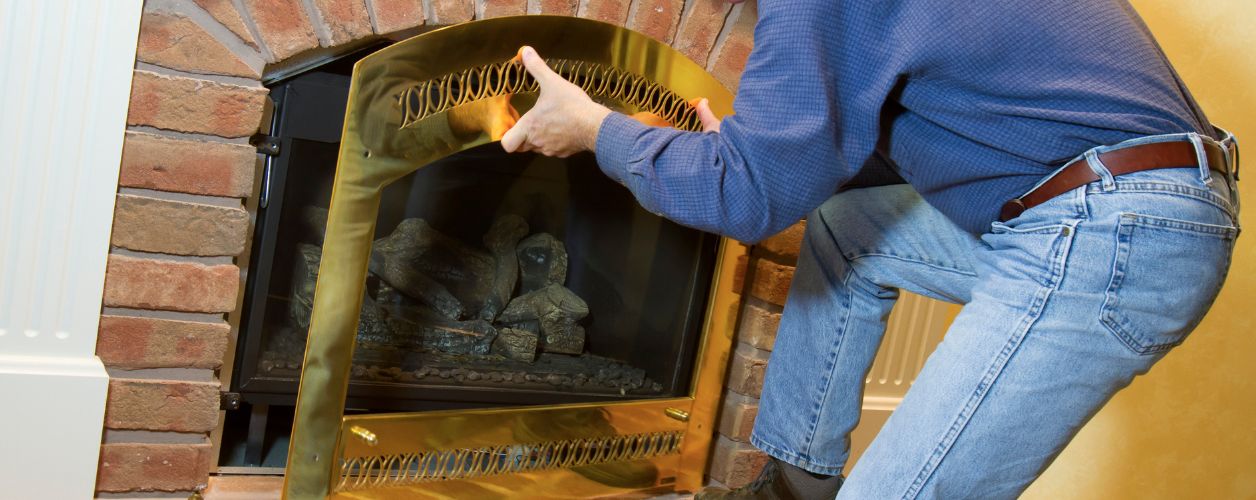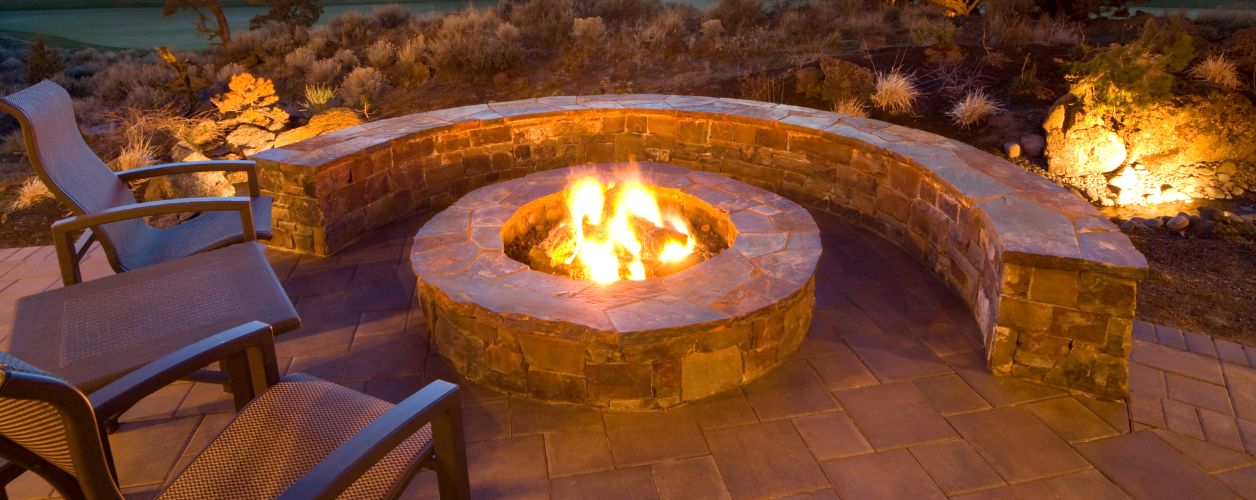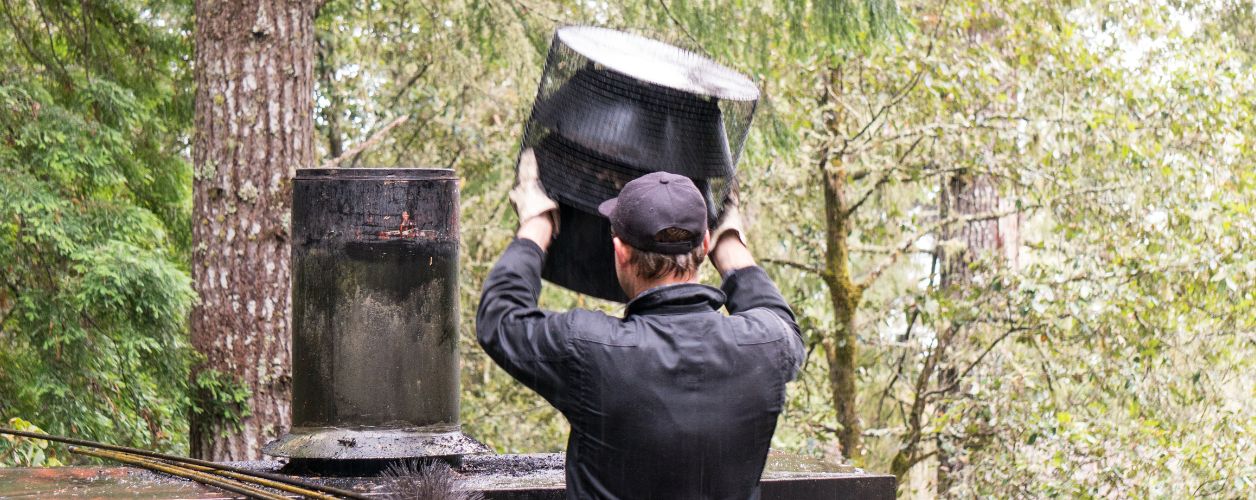Fireplace Installation Cost
Average Fireplace Installation Cost: £800 to £3,000
A fireplace installation costs vary from £600 to over £6,500, depending on the type of fireplace, installation complexity, and any required additional work like chimney lining or creating a new opening.

Table Of Content
- Introduction
- How Much Does It Cost To Install A Fireplace?
- Factors Influencing Fireplace Installation Cost
- Cost Comparison: DIY Vs. Professional Installation
- Fireplace Installation Cost-Saving Tips
- Warranties And Certifications To Look For
- Consequences Of Poor Or Incorrect Installation
- Conclusion
How Much Does Fireplace Installation Cost? Is It Worth It To Install A Fireplace?
A basic electric fire installation might cost around £400-£1,000, while installing a new wood-burning stove and chimney can reach £2,500 or more, with costs for opening up an old fireplace or building a new, complete system generally ranging from £1,900 to £3,500.
The fireplace installation in the UK offers a wide array of choices for homeowners, each with its own style, fuel type, and cost implications. Wood-burning fireplaces give a traditional look and the awe of real flames, but they need a chimney. Gas fireplaces are convenient and efficient, with their installation done by an engineer registered with Gas Safe only. Electric fireplaces are the easiest to install and are most friendly to the budget; you just need to plug it into an outlet. Bioethanol fireplaces allow for flexible positioning but incur a higher cost in operation and maintenance.
The installation costs depend on the type of fireplace, the complexity of the setup, the building structure, and the addition of flue or chimney works. Let us understand all the details needed to know before installing a fireplace.
How Much Does It Cost To Install A Fireplace?
Basic Unit Costs By Category:
- Wood stoves or fireplaces vary in cost between £500 and £2,500, depending on the size and design.
- Gas fireplaces usually cost between £400 and £1,800 for standard units, but an excess of £3,000 for higher-end units.
- Electric fireplaces tend to be cheaper and usually cost between £150 and £800.
- Biodegradable ethanol fireplaces vary between £300 and £1,500, depending on whether it is wall-mounted or freestanding.
Standard Labour/Installation Costs:
- The installation of an electric fireplace may cost around £150–£300, since no specialist pipework or flue is required.
- Gas fireplace installation is about £300–£600, but may be up to £900, if gas lines or new flues have to be installed.
- The installation for a wood-burning stove or log-burning fireplace by a stove fitter will vary between £800 to £1,500, principally if they require a chimney liner.
- Biodegradable ethanol fireplace installation will typically cost £200–£500, depending on the preparation of the wall or built-in installation.
Cost Range For Supply + Fit:
- Electric: £300 - £1,100
- Bioethanol: £500 - £2,000
- Gas: £700 - £3,500+
- Wood-burning: £1,300 - £4,000+
Additional/Hidden Costs:
- Building Control/Planning Permission: Heritage or listed buildings may require formal approval, application fees, and delays.
- Chimney Lining, Inspection, or Repairs: Most of the chimneys get inspected or lined before their operation, costing anywhere from £300 to £1,000+.
- Installation of hearth: Installation of a suitable hearth or extension to the existing base costs between £200 and £600.
- Decoration of Surround or Hábele: Bespoke surrounds, trim, or mantles cost from about £300 to £1,500, depending on material.
- Structural Work: Doing up a chimney or chimney breast, etc., or strengthening a wall could add another £1,000 to £3,000+.
- Ventilation Needs: There may be a requirement for additional air vents or ducts for safety and compliance, which can add around £150–£400 to the bills.
Final costs will depend on installation preferences, the amount of structural work required, and local labour charges.
Factors Influencing Fireplace Installation Cost
Some factors upon which fireplace installation cost depends are:
1. Price of Installation or Fitting
- Wood-burning fireplaces generally cost more to install because of the chimney or flue requirements, as well as regulations for buildings.
- Gas fireplaces must only be installed by a Gas Safe registered engineer, and the cost increases in cases where new pipework or ventilation systems are required.
- Electric fires tend to be the cheapest to fit as all they require is a standard power source and little or no structural changes.
2. Chimney/Flue Requirements or Modifications
- Existing chimneys may require relining, sweeping, or repairs before installation can take place, adding £300-£1,000+ to the costs.
- When a chimney does not exist, a twin-wall flue system is needed-and this may push costs up considerably.
- Into consideration also comes the length of the flue, the complexity of its routing, and the need for insulation.
3. Type of Property and Location Access
- Older or listed buildings will require planning permission or be structurally reinforced during installation.
- Labour time and scaffold use will be increased for multi-storey properties or restricted access areas.
- If in a rural or remote location, installations may attract higher travel charges from installers.
4. Custom Work or Bespoke Finishes
- Custom work to add preferences in surrounds, mantles, stonework, or alcove recesses can add considerably to the price.
- An especially bespoke hearth, cabinetry, or built-in media wall will attract cost increases for material and labour.
- Tailored design choices can add £500 – £2,000, depending on the complexity of the design and materials involved.
Cost Comparison: DIY Vs. Professional Installation
Safety Requirements
A gateway to legality is that British Gas and solid-fuel fireplaces must undergo the rigour of safety regulations and building regulations.
Under such installations, apart from being carried on by a Gas Safe engineer, duly qualified, they shall have a wood-burning installation carried out by an installer who is registered with HETAS.
A DIY Usually May Save Money, But Incur Risks
- You may save on labour (say £150 to £1,500) in a DIY, but special knowledge and tools are required.
- It may constitute a fire hazard or carbon monoxide leak if poorly fixed; it may invalidate warranties, or worse, future repairs may be costlier.
- Insurance companies may refuse claims if the fireplace was improperly installed or certified.
The professional way could be better for peace of mind, at least, for safety and compliance.
Fireplace Installation Cost-Saving Tips
1. Install During Off-Season
• Purchase and book installation in spring or summer when demand is low and installers may offer discounts on their rates.
• Seasonal sales on fireplace units and accessories by retailers in the warmer months are meant to clear stocks.
• Planning avoids incurring last-minute premium charges in mid-winter.
2. Choosing Simpler Designs
• Choose standard models over custom-made or elaborately designed fireplaces to cut down on unit and installation prices.
• Plain stone or metal surrounds are generally cheaper than custom-built or prime marble ones.
• Freestanding or wall-mounted units require less structural work for installation compared to recessed, built-in types.
3. Grouping Installation with Other Home Improvements
• Group fireplace installation with other renovations (such as refurbishment of the room or chimney repairs) to bring down labour and scaffolding costs.
• Contractors may grant discount rates for multi-service jobs since they will only have to travel and set up once.
• Coordinating a project with general builders, plasterers, or decorators will make it more cost-effective than paying for a separate call-out fee later.
4. Comparing Several Quotes
• Getting at least three quotes from HETAS or Gas Safe registered installers can help you to source the best price and value within your budget.
Warranties And Certifications To Look For
HETAS or Gas Safe Registered Installers
HETAS-registered installers should ideally be used in the installation of any wood-burning or multi-fuel fireplace to ensure that the work is being done within UK building regulations and safety standards.
A Gas Safe registered engineer has to fit gas fireplaces. The license underpins the installer being trained and lawfully authorised to install gas appliances.
Inspections done by qualified professionals will ensure safety, while compliance certificates will in many cases be needed for insuring the house and, later, for its transfer.
Product Warranties
- Most reputable fireplace manufacturers will offer a basic warranty of 1-5 years on their products.
- Longer guarantees may be possible where approved installers install the product and it continues to be serviced regularly.
- Make sure that you get the product registered post-installation so that the guarantee can then be assumed. Keep the receipt of the installation.
- Find out what exactly the warranty covers (parts only, parts and labour) and whether the use of non-approved parts will cancel the warranty.
- Installers might offer a warranty on their workmanship to give you that little extra assurance should any issues arise following installation.
In opting for certified installers and products with good warranties, you're protecting your investment for long-term safe use.
Consequences Of Poor Or Incorrect Installation
Safety Hazards
• Gas or solid fuel fireplaces that have been installed improperly and have caused a carbon monoxide leak pose a serious risk to the occupants.
• Figures in the wrong way, either by chimney or flue, could allow smoke to enter living quarters or create a back draft of toxic fumes.
• Inadequate clearances to combustibles or hearths with improper sizing present large fire hazards.
• Faulty gas connections may lead to explosive levels of gas build-up.
Reduced Efficiency and Repairs
• Being out of alignment and not tight causes the fireplace to work inefficiently and to waste fuel, thus making it more expensive to the owner.
• If the insulation or air supply is not installed correctly, the fireplace will underperform, if not outright fail.
• Structural damage due to excessive heat must be remedied at great cost, which may include walls, floors, or chimney structures.
• An incorrectly installed fireplace may void all warranties on the fireplace and all home insurance claims, in which case all repair costs will fall on the homeowner.
• The callouts during an emergency to fix an installation fault are usually charged at premium rates.
Legal and Compliance Issues
• An uncertified installation may have violated the local building code that resulting in the issuance of enforcement notices or fines.
• Lack of certification might scare the potential buyers and ultimately lower the price of the property.
Ensuring that installation is done properly will ensure that the fireplace operates safely while preventing measurements that may be taken later on.
Conclusion
Any fireplace raises comfort levels and value of a property, in any case, depending on the choice, flue or chimney requirements, and custom design features, with prices all over the place. Hidden costs include, but are not limited to, inspections, ventilation, and regulatory approvals. Professional installation guarantees the safety and compliance of the team of certified engineers. Having multiple estimates from reputable HETAS or Gas Safe registered installers is crucial to determining the best value, and planning now would qualify for seasonal discounts.
Costs of various services and materials in this cost guide should be taken as estimates. These depend on location, preference and demands in the market.



